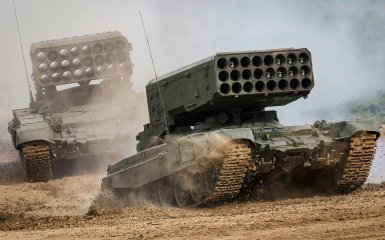The Russian column got stuck in the anti-tank traps that the Russians built before the Ukrainian operation in Kurshchyna in early August.
Points of attention
- The Russian army was stuck in anti-tank traps during a failed counteroffensive attempt on the southern edge of a salient in the Kursk region.
- The Ukrainian 129th Territorial Defense Brigade repelled the Russian counteroffensive with the help of explosive drones, burning dozens of enemy armored vehicles.
- The Armed Forces were able to stop the enemy's attack in the Kursk region and kept the situation under control, despite the temporary success of the occupiers.
The Russian army failed during the counteroffensive in the Kursk region
As the publication notes, the attack aimed at the SSU-controlled village of Plekhovo on the southern edge of the salient did not just fail—it failed in the most ironic way.
The Russian column was stuck in anti-tank traps — trenches and a strip of concrete barriers that the Russians had built before the Ukrainian invasion of Kursk in early August.
Outside of Plekhovo, there are two main defense structures built by Russia — anti-tank traps and an infantry trench complex nearby.
The attacking Russians were having trouble getting through the anti-tank traps when Ukraine's 129th Territorial Defense Brigade launched a wave of explosive drones.
Our soldiers taught a lesson to the Russian occupiers and their equipment, burned dozens of armored vehicles and eliminated the enemy's personnel, — wrote Ukrainian military correspondent Yurii Butusov.
Defense forces of Ukraine stopped the counteroffensive of the Russian army in Kurshchyna
In the Kursk region, Russian troops sought to attack the positions of the units of the Armed Forces from the flanks. However, the attempts of the occupiers were stopped.
This was reported by the representative of the commandant's office of the Armed Forces of Ukraine and the spokesman of the Ministry of Defense of Ukraine Oleksiy Dmytrashkivskyi.
Dmytroshkivskyi noted that the situation has now stabilized and is currently under the control of the Armed Forces. Despite this, the enemy still achieved partial success.
The Russians entered one of the settlements. They started fighting for another settlement, but that's all.
He also added that many civilians remain in the Ukrainian-controlled part of the Kursk region. In some settlements there are more than a hundred, or even more than 500 residents.




